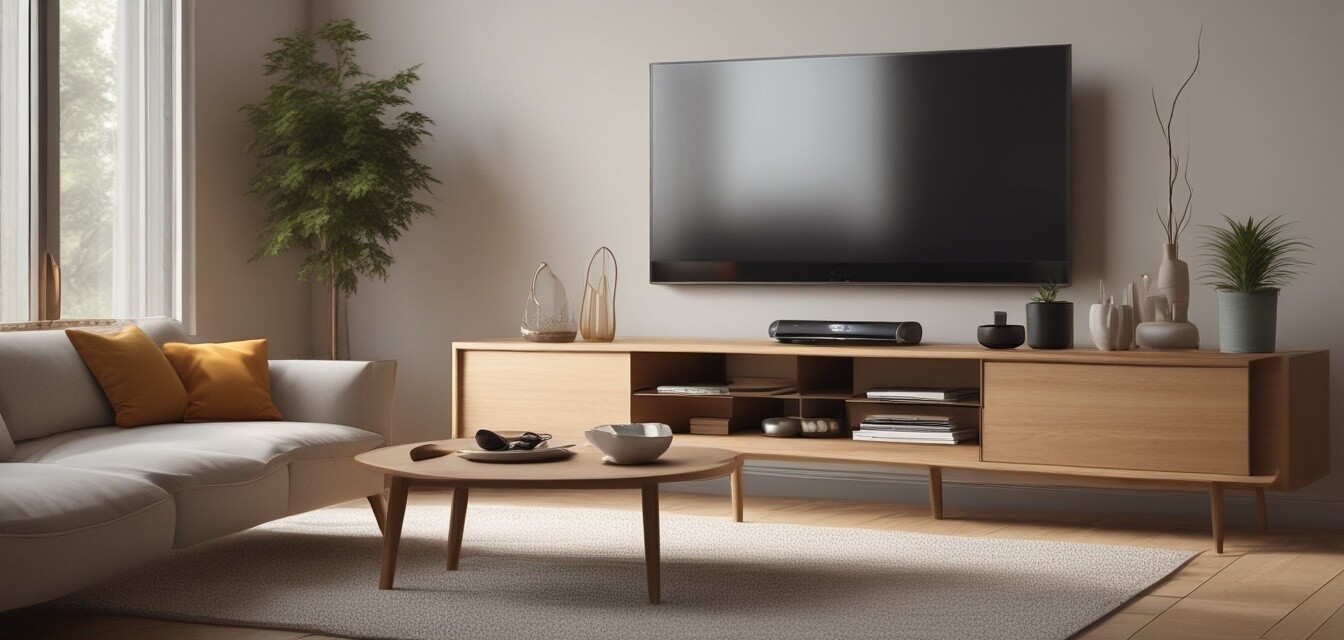
Consumer Awareness of Eco-Friendly Furniture in 2025
- In 2025, consumer awareness regarding eco-friendly furniture will significantly increase, driven by heightened environmental consciousness.
- Sustainable materials and ethical sourcing will be key considerations for consumers when purchasing TV stands and other furniture.
- Emerging trends in design will focus on versatility, aesthetic appeal, and functionality for modern living spaces.
- Consumers are expected to gravitate towards brands that transparently communicate their sustainability practices.
- The market for eco-friendly furniture, including wooden TV stands, is projected to expand as consumers align their purchases with their values.
As we approach 2025, the focus on eco-friendly furniture will become more pronounced. There is a noteworthy shift in consumer behavior as people prioritize sustainability in their purchasing decisions. This article discusses how consumer awareness regarding eco-friendly furniture, including sustainable TV stands, is evolving and what it means for the industry.
The rise of environmental awareness
In recent years, environmental awareness has ramped up significantly. Driven by climate change discussions and the increasing visibility of environmental issues, consumers are more inclined to choose eco-friendly living options for their homes. This trend is expected to grow as more people seek to make purchases that reflect their values.
Factors influencing consumer decisions
| Influencing Factor | Description |
|---|---|
| Sustainability | Consumers are looking for products made from renewable resources and materials that have minimal impact on the environment. |
| Transparency | Brands that provide clear information about their sourcing and manufacturing processes are favored by consumers. |
| Design and Aesthetics | Stylish and modern designs that incorporate functionality appeal to consumers, encouraging them to consider eco-friendly options. |
| Price and Accessibility | While many consumers are willing to pay a premium for sustainable products, price remains a key factor in decision-making. |
Trends in eco-friendly furniture design
As consumer preferences shift, designers are embracing sustainable materials and innovative technologies in furniture production. Here are a few key trends to look out for in 2025:
- Modular designs: Consumers are increasingly interested in versatile furniture that can adapt to their changing needs, such as modular TV stands.
- Natural materials: The use of reclaimed wood and bamboo is anticipated to rise, promoting a rustic aesthetic while being eco-friendly.
- Biophilic design: Incorporating natural elements into furniture design aligns with the desire for healthier living spaces, fostering a connection with nature.
- Minimalism: Simple, understated designs that emphasize functionality are becoming more attractive to consumers who desire clean aesthetics.
Consumer expectations for brands
In 2025, consumers will expect brands to not only provide quality products but also demonstrate a commitment to sustainability. This includes:
- Clear sustainability practices.
- Active involvement in community and environmental initiatives.
- Innovative use of sustainable materials.
- Transparency in the supply chain and recycling programs.
The impact of social media and marketing
Social media plays a crucial role in shaping consumer opinions. Brands that effectively utilize digital platforms to advocate for sustainability will likely see greater engagement and loyalty from consumers. Highlighting eco-friendly practices, sharing customer testimonials, and creating visually appealing content showcasing products can significantly impact purchasing choices.
Connecting with eco-conscious consumers
Direct marketing strategies targeting eco-conscious consumers can enhance brand loyalty. Some effective ways to connect include:
- Eco-focused storytelling on social platforms.
- Collaborations with environmental influencers.
- Participation in sustainability events and community activities.
Future forecast and market outlook
The eco-friendly furniture market is anticipated to flourish, driven by increasing consumer demand for sustainability. As more individuals become aware of their purchasing choices’ environmental impacts, brands that prioritize eco-friendly practices will likely gain a competitive edge.
Market growth projections
| Year | Market Size (in billion USD) | Growth Rate |
|---|---|---|
| 2023 | 15 | 10% |
| 2024 | 16.5 | 10% |
| 2025 | 18.15 | 10% |
Conclusion
Consumer awareness of eco-friendly furniture is set to escalate by 2025, aligning with the broader trend of sustainable living. Brands that adapt to these shifts by prioritizing environmentally friendly practices, transparency, and modern design will thrive. As the market continues to evolve, eco-friendly furniture options—such as floating TV stands and other sustainable choices—will become increasingly prominent, helping consumers create beautiful, responsible living spaces.
Pros
- Increased consumer awareness leads to a greater demand for sustainable options.
- Brands emphasizing transparency build trust and loyalty.
- Innovative designs cater to modern living while being eco-friendly.
Cons
- High-quality sustainable furniture may come with a higher price tag.
- Not all brands may be honest about their sustainability claims.
- Awareness does not always translate to purchasing decisions.